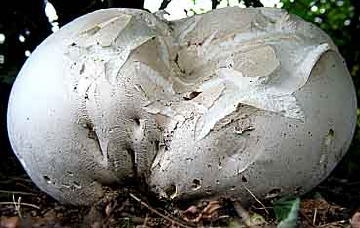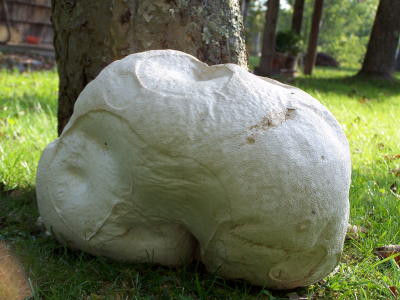ODDITY: GIANT CALHOUN PUFFBALL HAD 7 TRILLION SPORES

Compare this giant puffball photo supplied by
the late biology teacher Jim Weaver with the
puffball from Pleasant Hill published by the Herald (2006)

Pleasant Hill puffball
Former Calhoun High biology teacher Jim Weaver, now deceased, who had been teaching in Japan, wrote that he discovered a giant puffball mushroom on Yellow Creek about 1976.
Weaver said Calvatia gigantea Puffballs are round or pear-shaped fruiting bodies that contain spores.
They sit directly on the ground or on rotten wood and range from golf ball size to as large as a watermelon. A big specimen of the giant puffball (Calvatia gigantea) can be almost two feet long and contain 7 trillion spores.
The Pleasant Hill "baby" was about that size.
The giant puffball cracks open to allow the wind to carry away its spores. Other puffballs have a small opening at the top. The wind may suck spores out of these openings like smoke drawn from a chimney.
The spores can also be "puffed" out of the opening when the fruiting body is hit by raindrops.
Each spore is 3.5 to 5.5 microns in diameter. They are bone dry, making a mature giant puffball a sack of fine powder.
The Lakota tribe of Native Americans used this clean dry material in their medicine, according to Weaver.